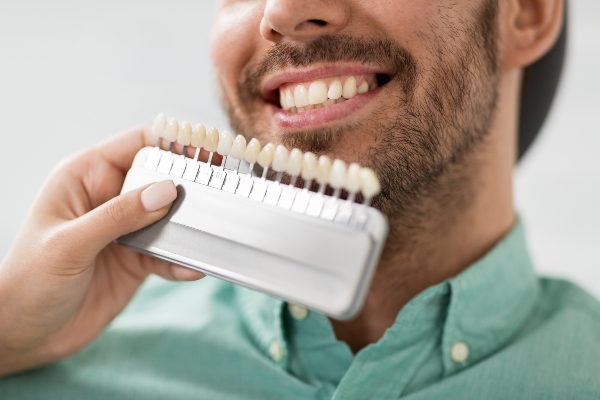Why Do I Have Receding Gums?

A diagnosis of receding gums can be confusing and worrying to many dental patients. Officially known as gingival recession, this situation is usually identified by sensitivity in the teeth, exposed tooth roots and a loose feeling in a tooth or multiple teeth. Sometimes, the gums may bleed regularly or appear swollen and red in color. Other times, patients do not notice that their gums are receding, since the process can happen slowly over several years. A dentist or dental hygienist can help to identify whether or not a patient has gums that are receding and may recommend a course of treatment, such as gum grafting in extreme cases.
The causes of receding gums
Gum recession is caused by several different factors, with many patients experiencing different reasons for the process.
A matter of age
Commonly, receding of the gums is often noticed once patients reach the age of 40. It can be experienced by patients in their teens and young adulthood, but age is often a regular factor in the identification of the problem. This is thought to be due to the gums enduring years of sub-optimal treatment. As adults age, hormones can fluctuate; this can also contribute to gum sensitivity and recession in female patients.
The onset of periodontal disease
Colloquially known as gum disease, periodontal disease occurs in almost 50% of adults over the age of 30, with increasing regularity as adults age according to the Centers for Disease Control and Prevention. It is caused by poor brushing habits that lead to gum inflammation from plaque and tartar on the teeth. This inflammation can erode the gums and make them recede.
Incorrect brushing habits
Though many people learn how to brush their teeth as young children, sometimes the best practices are ignored as adults. Aggressive side-to-side brushing has been found to increase gum erosion, leading to receding gums. Using circular brushing movements or investing in an electric toothbrush with circular motions programmed are both great ways to correct destructive habits.
Infrequent dental visits
When patients visit the dentist irregularly, the dentists may not catch the signs of gum recession in time to avoid pain and damage. Dental professionals are trained to identify the markers of gum recession and recommend treatment to patients. Dentists and dental hygienists can also scrape away destructive tartar as well as teach patients how to floss correctly. A routine of good dental practices is key to preventing the gums from receding.
Genetic predisposition
According to the National Institute of Dental and Craniofacial Research, certain people may be more likely to develop gum recession due to genetic factors. Discussion of health trends within a family and its history can be a great place to discover whether a patient is genetically likely to face gum erosion or recession. While there is no treatment for genetic predilection to gum recession, the knowledge of the likelihood of developing gum issues can help patients make healthier dental choices.
Conclusion
Understanding the causes of receding gums can be a helpful way for patients to evaluate personal decisions and improve dental care. Regular brushing, flossing and visiting the dentist are excellent places to start caring for teeth and gums.
Request an appointment here: https://www.sacramentosleepdentist.com or call Dental Excellence of Greenhaven at (916) 293-0504 for an appointment in our Sacramento office.
Check out what others are saying about our services on Google: Read our Google reviews.
Recent Posts
Dental veneers may be the most effective option to repair uneven, misshapen, or broken teeth. They can also help reduce gaps in the teeth. Traditional veneers come in two main types: porcelain and composite resin. While both can help you achieve that movie-star smile, they have some differences. This article will explore both porcelain and…
A great smile can improve your confidence, but a poor one can have the opposite effect. Dental veneers may be the answer if you are struggling with the quality of your smile. Read on to learn how they can transform not only your smile but your confidence as well.People avoid smiling altogether when they do…
Dental implants are a permanent, functional solution for patients with tooth loss in one or both dental arches. Both partial and full arch dental implants have become more accessible, customizable, and successful for a wide range of patients. However, they have different uses and candidacy requirements. Understanding the differences between these options helps clarify which…
If you are tired of feeling self-conscious about your smile, then dental veneers may be the solution you are looking for. They can help repair chipped, stained, or misaligned teeth. This blog guide will walk you through everything you need to get dental veneers.Dental veneers are thin, custom-made shells that a dentist places over the…


